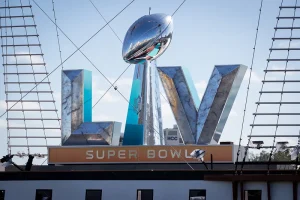Pebble in the road: SVB bank closure
March 15, 2023
Silicon Valley Bank (SVB) collapsed on March 10th 2023, making it the largest bank closure since the 2008 financial crisis caused by the housing market. However, this is a different scenario
Founded in 1983, SVB was known for financing tech companies, usually ones in silicon valley. Before the ultimate collapse, it was a high ranking commercial bank in America and controlled over $200 billion. The collapse itself was caused by many factors that eventually caused the bank to have to sell securities at a loss. That itself caused a state of unease in account members on March 9th and the multiple withdrawals of people saving caused the bank to be taken under control by the FDIC.
According to Christine Stanford, the AP economics teacher, every bank’s balance sheet is made up of assets and liabilities; these are always supposed to be equal. In SVB’s case, they had many bonds that were bought when interest rates were lower (around 2-3%). Now bonds are around 5.5% so in order for SVB to sell its old bonds at 2-3%, they would need to sell them at a lower price, therefore, generating a loss for the bank. To counter this, SVB issued stock. A lot of financial advisors advised companies (who had money invested in SVB) to pull out their money. Therefore, a bank issuing stock is usually not a good sign.
Too many people tried pulling out their cash at once causing the bank to not have enough money which is when the FDIC took control of SVB on friday. The main concern people had was that SVB was not a normal bank. Most banks typically deal with personal finance accounts but, SVB usually deals in tech companies and startups, which makes it an abnormality to other banks. Due to their involvement in tech companies, they would surpass the FDIC’s insurance policy of insuring 250,000.
However,the FDIC made a statement that all money held at SVB will be paid back. So although a bank closure may be frightening, especially one that was the 16th largest bank in the US, the need to be afraid is quite low as this closure is very unlike the closures of 2008.























































































